Introduction
Chinese cuisine boasts a rich tapestry of snacks and desserts, each rooted in tradition and crafted with precision. Among these, mahua (麻花), or Chinese dough twists, stand out as a beloved treat celebrated for their delicate crunch and satisfying texture. These golden-brown spirals, often flavored with hints of sweetness or salt, have graced street markets, family kitchens, and festive tables for centuries. While their origins trace back to northern China, their popularity has spread globally, captivating palates with their addictive crispiness. Crafting the perfect mahua requires a blend of technique, patience, and an understanding of the science behind achieving that coveted shatter-in-your-mouth texture. This article delves into the history, ingredients, and meticulous steps involved in creating homemade crispy dough twists, ensuring your batch rivals even the most revered street vendors.
A Brief History of Mahua
The story of mahua is as twisted as the pastry itself. Legend traces its roots to the Han Dynasty (206 BCE–220 CE), where it was said to be a staple for soldiers during long campaigns due to its durability and energy-boosting properties. Over millennia, regional variations emerged: Tianjin’s mahua became famed for its sweet, sugary glaze, while Shaanxi’s version leaned into savory notes with cumin and chili. Today, mahua is not merely a snack but a cultural icon, often exchanged during holidays like Chinese New Year as symbols of good fortune and togetherness.
The Science Behind Crispiness
Achieving the perfect crunch in mahua hinges on two factors: hydration and heat control. The dough must strike a balance between tenderness (from gluten development) and brittleness (from minimal moisture). During frying, rapid moisture evaporation creates air pockets, while the Maillard reaction caramelizes sugars, yielding a golden hue and nutty aroma. Mastering these elements transforms simple ingredients into a crispy masterpiece.
Ingredients: Quality Matters
To craft authentic mahua, gather the following:
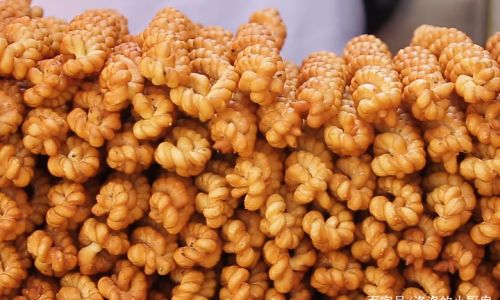
- All-Purpose Flour (500g): The backbone of the dough, providing structure.
- Water (180ml): Lukewarm to activate yeast (if using) or dissolve sugar.
- Sugar (50g): Enhances browning and adds a subtle sweetness.
- Baking Powder (1 tsp): A leavening agent for airy layers.
- Vegetable Oil (30ml + for frying): Adds richness and aids in frying.
- Salt (1 tsp): Balances flavors.
- Optional Add-Ins: Sesame seeds, five-spice powder, or black pepper for flavor variation.
Tools of the Trade
- Mixing Bowls: Stainless steel or glass for dough preparation.
- Rolling Pin: A tapered pin aids in even dough thickness.
- Deep Fryer or Wok: Ensures consistent oil temperature.
- Thermometer: Critical for maintaining 350–375°F (175–190°C) oil.
- Slotted Spoon: For gentle flipping and draining.
- Parchment Paper: Prevents sticking during resting.
Step-by-Step Crafting Process
Dough Preparation: The Foundation of Crispiness
a. Combine Dry Ingredients: In a large bowl, whisk flour, baking powder, salt, and sugar. For savory mahua, add 1 tsp of five-spice powder or pepper.
b. Incorporate Wet Ingredients: Create a well in the center and pour in water and oil. Mix with a spatula until shaggy clumps form.
c. Knead with Precision: Transfer to a floured surface and knead for 8–10 minutes. The dough should be smooth, elastic, and slightly tacky but not sticky. Over-kneading toughens the dough; under-kneading yields dense twists.
Resting: The Gluten’s Reprieve
a. First Rise (Optional): For lighter mahua, let the dough rest 30 minutes covered with a damp cloth. This step develops gluten gently.
b. Portioning: Divide the dough into 40g pieces (about golf ball-sized). Cover to prevent drying.
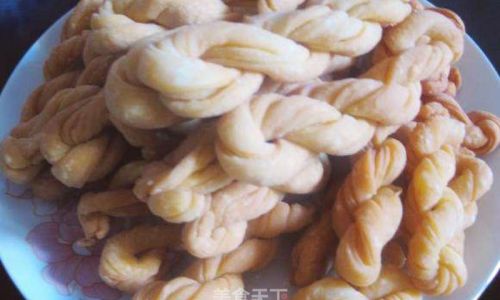
Shaping: The Twist That Defines
a. Rolling: Flatten each piece into a 6-inch rope, tapering the ends. Aim for even thickness to ensure uniform frying.
b. Twisting Technique:
- Hold one end in each hand.
- Cross the right end over the left, creating a single twist.
- Repeat, looping the ends in opposite directions to form a helical shape.
- Press the ends firmly to seal, preventing unraveling during frying.
c. Final Shaping: Place twists on parchment-lined trays, spaced 1 inch apart. Cover while frying batches.
Frying: The Moment of Transformation
a. Oil Temperature: Heat oil to 350°F (175°C). Too hot, and the exterior burns; too cool, and grease seeps in.
b. Frying in Batches: Gently lower 4–5 twists into the oil using a slotted spoon. Avoid overcrowding, which lowers oil temperature.
c. Flipping Rhythm: Fry for 2–3 minutes per side, flipping occasionally. Listen for a gentle sizzle—silence means the oil is too cold; crackling indicates excessive heat.
d. Golden Perfection: Remove when twists float and turn golden brown. Drain on a wire rack (not paper towels, which traps steam and softens the crust).
Cooling and Storage: Preserving Crispiness
a. Cool Completely: Let twists cool on racks for 20 minutes. Residual heat trapped in enclosed containers creates condensation, ruining texture.
b. Storage: Store in airtight containers at room temperature for up to 5 days. For extended freshness, freeze uncooked twists and fry directly from frozen, adding 1–2 minutes to cooking time.
Troubleshooting Common Pitfalls

- Soggy Twists: Oil temperature was too low, or twists were undercooked. Use a thermometer and fry in smaller batches.
- Dense Texture: Over-kneading or insufficient leavening. Reduce kneading time and check baking powder freshness.
- Uneven Browning: Inconsistent oil temperature. Invest in a reliable thermometer and adjust heat as needed.
Flavor Variations to Elevate Your Mahua
- Sweet & Spicy: Toss freshly fried twists in a mixture of sugar, cinnamon, and cayenne pepper.
- Sesame-Crusted: Brush with egg wash and sprinkle sesame seeds before frying.
- Cheese-Stuffed: Wrap a small cube of cheddar or Parmesan inside the dough before twisting.
- Savory Herb: Mix dried rosemary or thyme into the dough for an aromatic twist.
Serving Suggestions
- Pair with Tea: A cup of jasmine or oolong tea complements the richness of mahua.
- Dipping Sauces: Elevate with a side of honey mustard, chili oil, or soy-ginger glaze.
- Gift-Worthy: Package in decorative tins for a thoughtful, edible present.
The Cultural Significance of Mahua
Beyond the kitchen, mahua embodies deeper cultural meanings. In northern China, twists symbolize unity and harmony—their intertwined shape reflecting life’s interconnectedness. During weddings, they are exchanged as tokens of eternal bonds. For migrant workers, a bag of mahua carries the taste of home, a comforting reminder of familial love.
Conclusion: The Joy of Craftsmanship
Crafting mahua is an act of patience and precision, a dance between tradition and innovation. Each twist tells a story—of ancestral wisdom, culinary artistry, and the simple pleasure of sharing food. Whether you’re a novice baker or a seasoned chef, the journey to perfecting these crispy spirals is as rewarding as the first crunch. So, roll up your sleeves, heat the oil, and let the aroma of freshly fried mahua fill your kitchen. Your efforts will be rewarded with a snack that transcends time, culture, and craving.
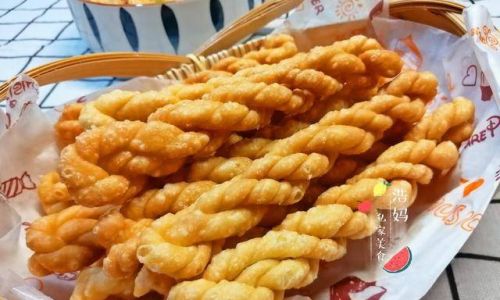
Final Tip: Experiment fearlessly! Add cocoa powder for chocolate twists or matcha for a vibrant green hue. The beauty of mahua lies in its adaptability—a canvas for your culinary creativity.
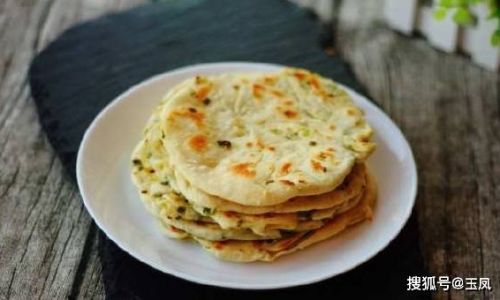
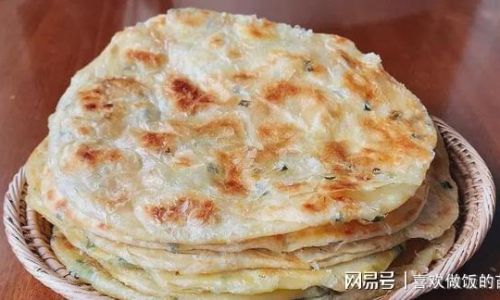
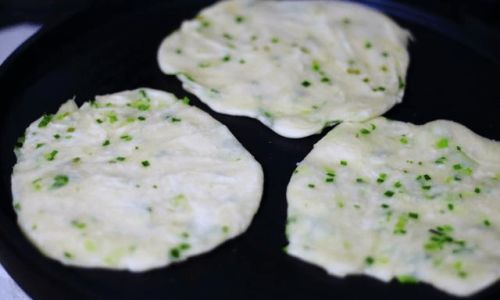
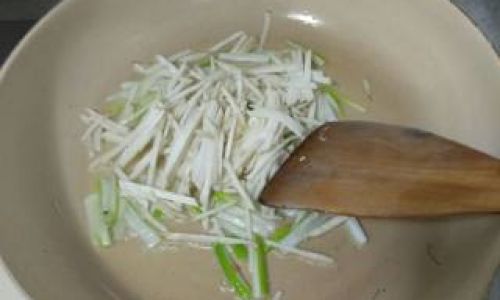
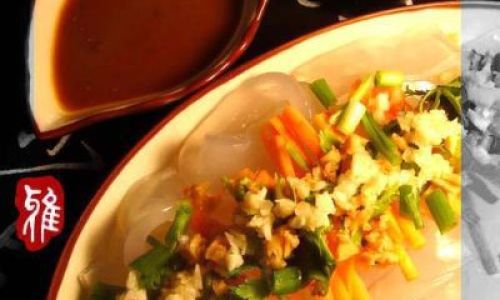
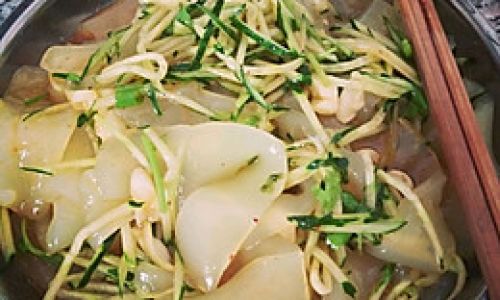
0 comments